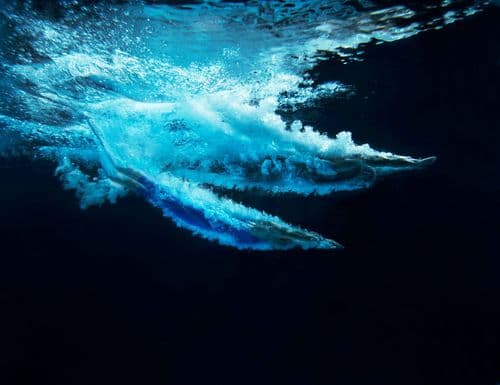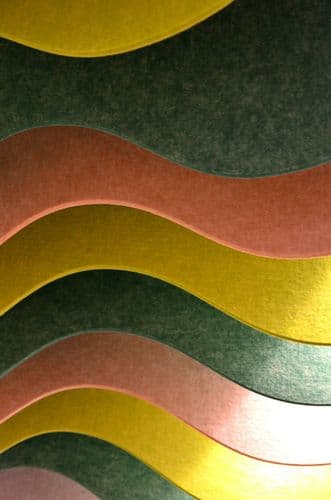Key Points
- Patented leather micronisation yields dense, homogeneous powders that integrate up to 50% by volume without additives, preserving performance.
- Two routes: PHOENIX (100% recycled leather, heat-pressed for badges, pendants) and QILIN (thermoplastic granules replacing ABS/TPU/PP in components).
- Closed-loop model: client brands supply sorted leather waste and receive bespoke materials; chemistry is matched to tanning/finishes for consistency.
- Scale by application: PHOENIX is craft-led (~30k pcs/yr), QILIN runs in multi-ton volumes on standard plastics lines and is recyclable.
- Impact measured via LCAs with clients; polymer choices prioritise bio-sourced/recycled options to cut footprint without compromising quality.
Full interview with Authentic Material
Applying an aeronautical process to create materials for horns was an intriguing idea. Could you elaborate on this initial idea of Authentic Material?
The idea emerged while we were working on two projects: creating hydrophobic horns and developing powder metallurgy for aeronautics. We discovered that most "made in France" knives with horn handles used horns sourced from across the globe, as French cows have insufficient horn material.
Our solution was to apply powder metallurgy techniques to horn powder, allowing it to be densified into a new material without binders. This process enabled us to produce knife handles that were entirely "made in France," including the horn.
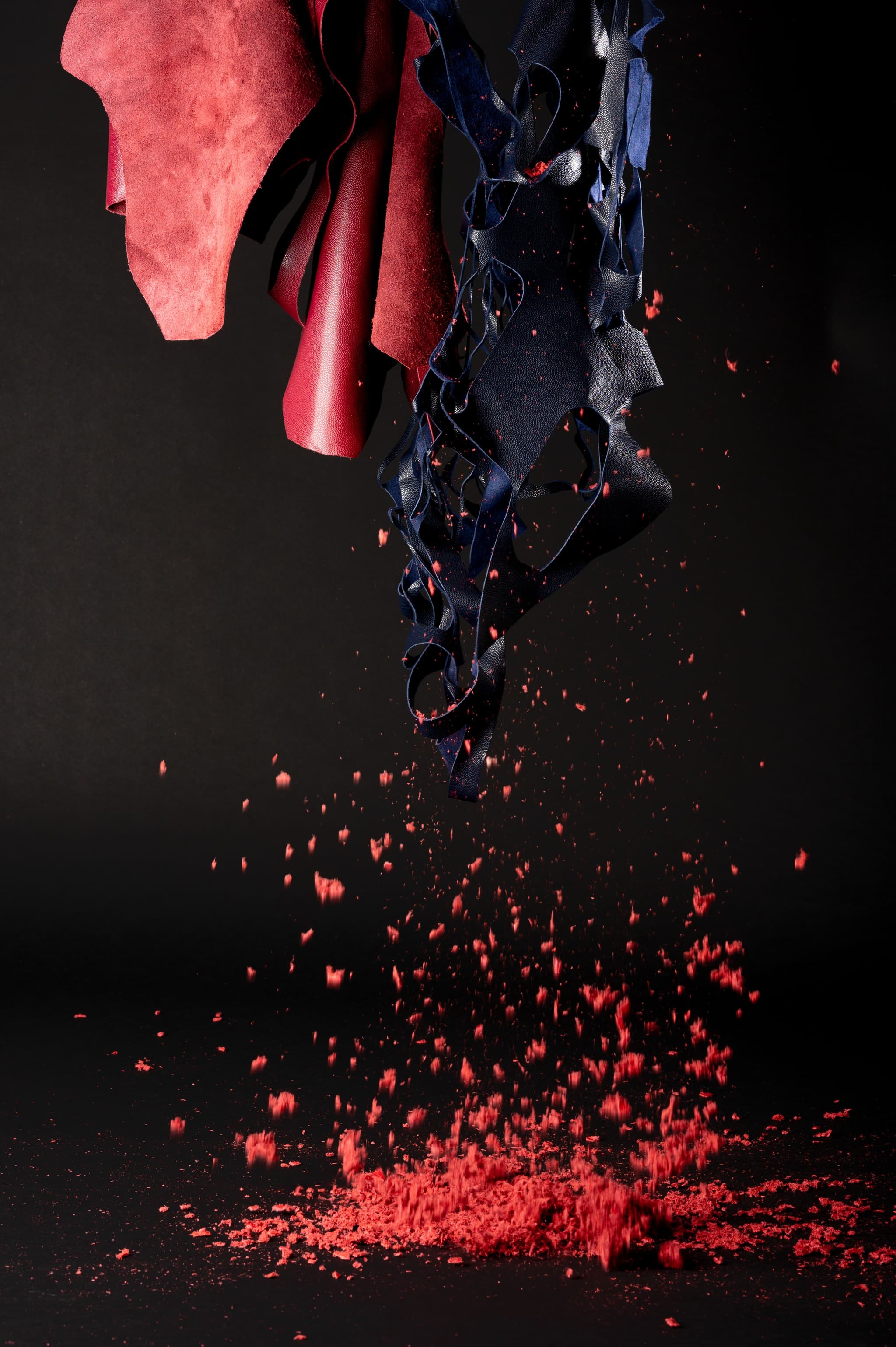
Since transitioning your focus to leather, an emblematic material of French luxury, how has Authentic Material navigated the complexities of redefining such a traditional material for modern luxury markets?
At Authentic Material, we don't produce recycled leather; we recycle leather. The nuance is subtle but essential. We transform leather scraps into new materials that don't compete with traditional leather, offering an effective solution for managing leather waste.
Leather production generates waste at every stage, from the tannery to the leather goods workshop. The more the skin is processed, the greater the quantity and value of the waste. In bag production, for example, up to 50% of the skin can be discarded. When accounting for quality issues and dormant stocks, the amount of leather waste becomes enormous. Additionally, as the value of finished leather increases, recycling becomes more complex. Let me explain why.
Numerous treatments during the production of leather impact their chemistry. A by-product of the food industry, the skins come from multiple animal species: mainly veal and lamb. Then tanned, the skin becomes leather and therefore rot-proof. There is a wide variety of tanning, based on chrome, plants and other synthetic compounds, and each tannery has developed its own know-how. Added to this are various finishes in terms of colors and textures.
The use of unsorted leather in an open recycling loop, where it would be reintegrated repeatedly as an input into a production system, is therefore, impossible due to this plurality of conditions and chemistries.
Authentic Material has developed real expertise in the analysis and processing of its customers' leather waste. All can be recycled, provided that the supplier has isolated them by type of tanning. At Authentic Material, recycling takes place in a closed loop: the customer is the supplier of the leather and the user of the recycled material. Sharing Authentic Material's resources for the benefit of projects to open the recycling loop is possible, provided that the market and economic model are viable.
However, to be used as an input, leather must be worked, and grinding a soft material is more complex than it seems. Mechanical grinders produce a heterogeneous mixture with variable properties. Thus its integration into materials can negatively impact the performance of the product. To mitigate this risk, the quantity of leather as an input is, therefore, limited.
Authentic Material's patented leather micronisation technologies combined with know-how provide significant competitive advantages. They guarantee the production of a high-quality powder. Dense and homogeneous, it can be incorporated up to 50% by volume and offers a high-performance material. Implemented in its factory in the Toulouse region, Authentic Material offers an opportunity for leather recycling on an industrial scale.

Can you discuss the approach of “creative circularity” to Authentic Material’s bespoke material design process and the way you collaborate with luxury brands to meet their specific needs?
The basic statement is you have leather scraps, and we are designing new materials from it. The common denominator is our expertise in leather chemistry and micronisation, from there we have two materials ranges which calls for different technologies and targeted markets.
PHOENIX range is a 100% leather recycled material produced by heat pressing into molds at our facilities. It is a top-of-the-range material for lifestyle and accessories applications. This range is not meant to recycle big quantity of leather, but is geared to fine craftsmanship and offering a well-known material in a novel form. From a drawing, designers from clients and Authentic Material will iterate to produce leather powder and mold answering their needs.
We are already present on the market through collections for a major French luxury maison. PHOENIX is the starting point for design; the designer creates in line with the material’s potential and its limits.
QILIN range is thermoplastic, a virtuous alternative to ABS, TPU, PP and other plastics widely used in for components for accessories and leather goods. With QILIN, we are recycling large quantities of material to offer an upscale alternative to plastic. With a heavy charge of natural material of between up to 50%, QILIN is blended with a bio-sourced or recycled polymers).
When we develop a QILIN formula for a client, we ask three questions: what the brand’s engagement is in terms of recyclability and bio-sourcing? What are the project’s mechanical constraints and what price are they willing to pay? From that base, we build the formula.
This material, compatible with standard plastics processing technologies, responds to the issue of end-of-life waste management and the need for sustainable materials. QILIN is also recyclable.
To give examples of application, PHOENIX can be used for pendants and badges, while QILIN can be for shoe heels and bags reinforcements.
At the same time, if the client wants to investigate other types of applications that can not be handled with QILIN or PHOENIX, we are happy to investigate, R&D is a major source of revenues too.

Luxury is often about the balance between rarity and singularity. How do you ensure that the unique nature of each project does not compromise the scalability and reproducibility of Authentic Material’s technology across different materials and markets?
PHOENIX is a luxurious material by excellence, calling for a unique in-house technology added to craftmanship. Production capacity is confidential around 30 000 pieces per year.
Whereas QILIN production is counted in multiple tons and can be processed in standard plastics processes.
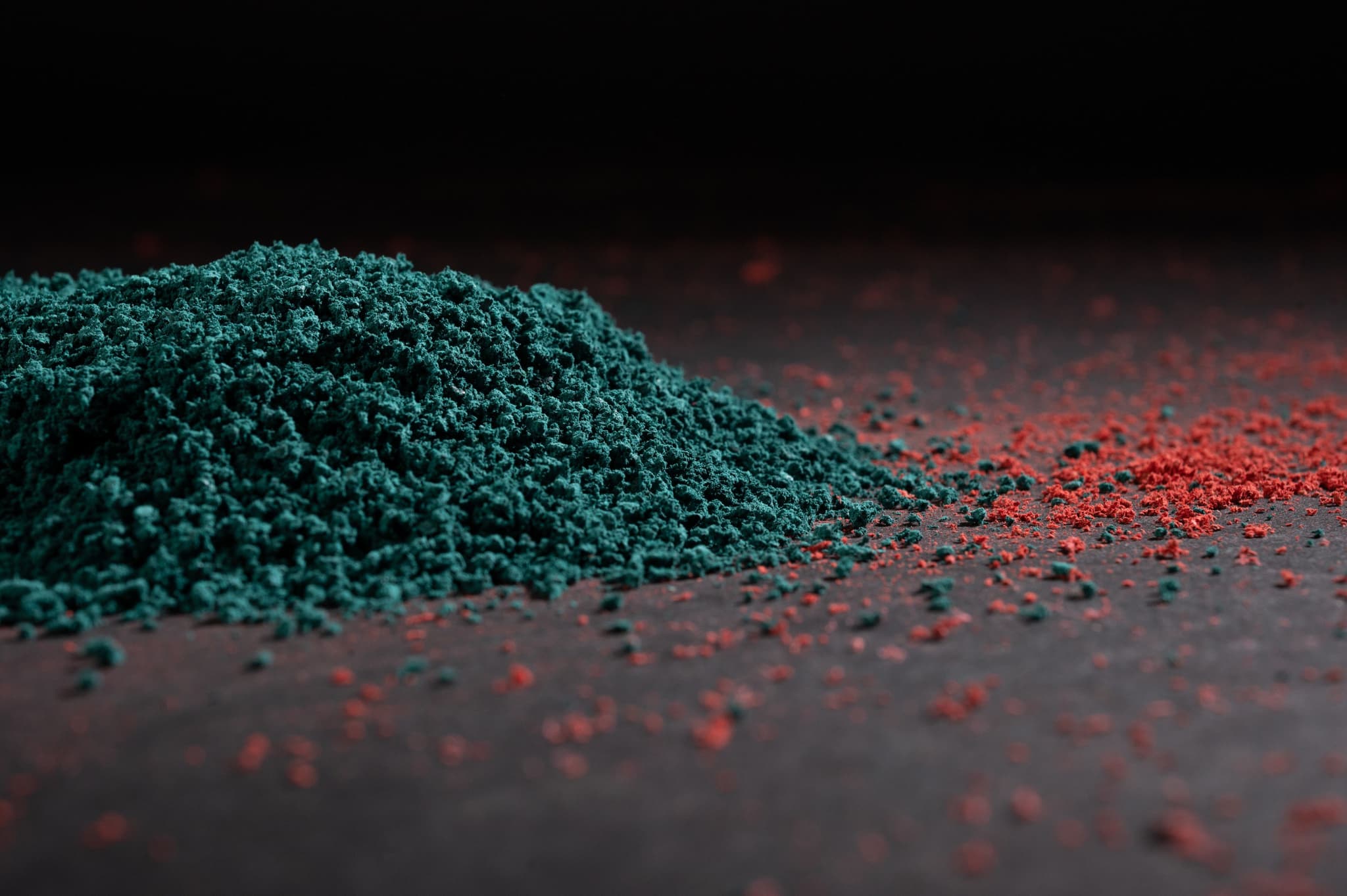
How does Authentic Material measure the environmental impact of its processes and products to ensure continuous improvement?
Since October 2023, our factory has been working on several initiatives to measure our energy consumption. For products, each material is custom-designed, together with the client we share data for LCA calculation. For example, the choice of polymers is done considering LCA.
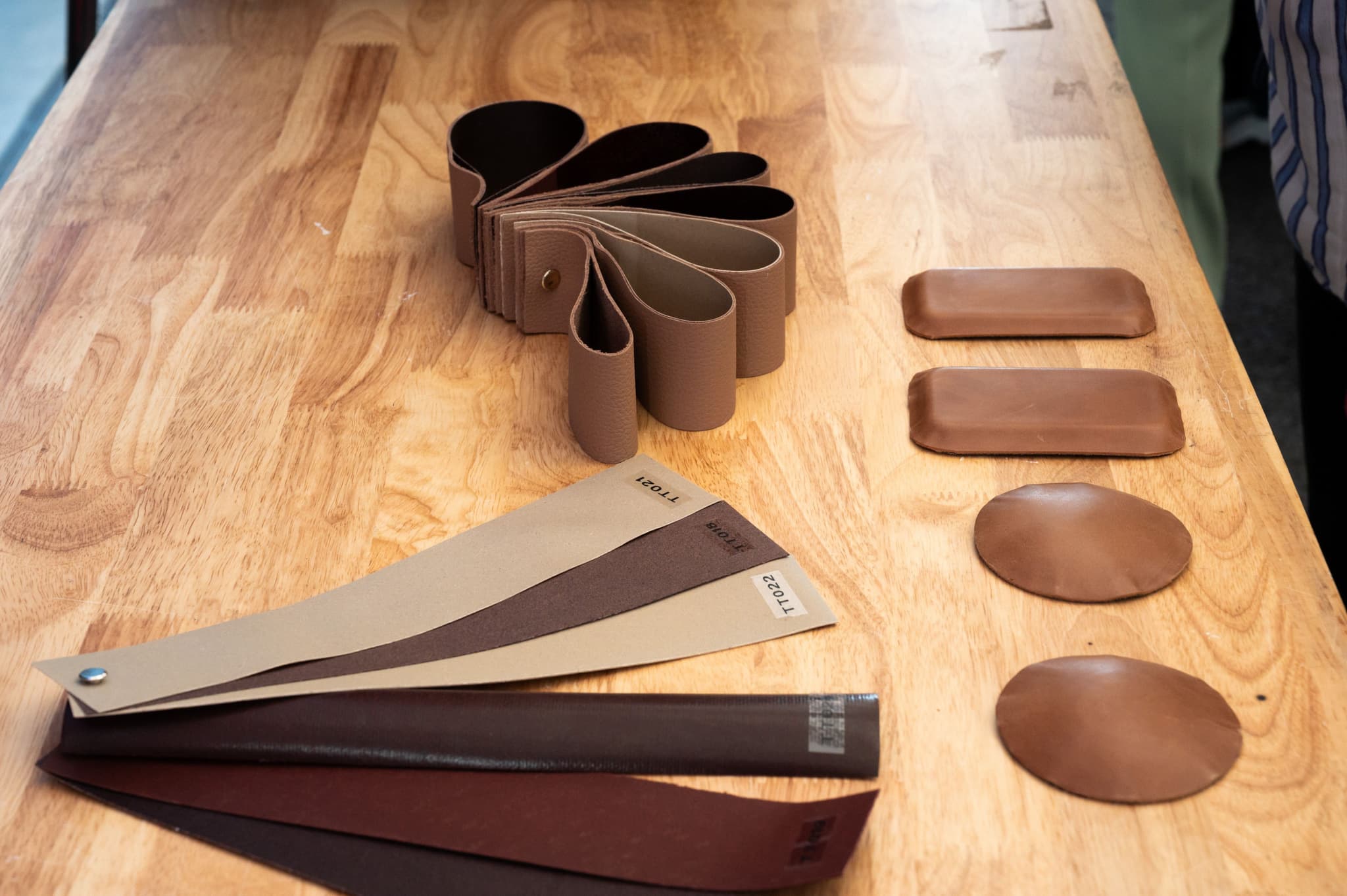
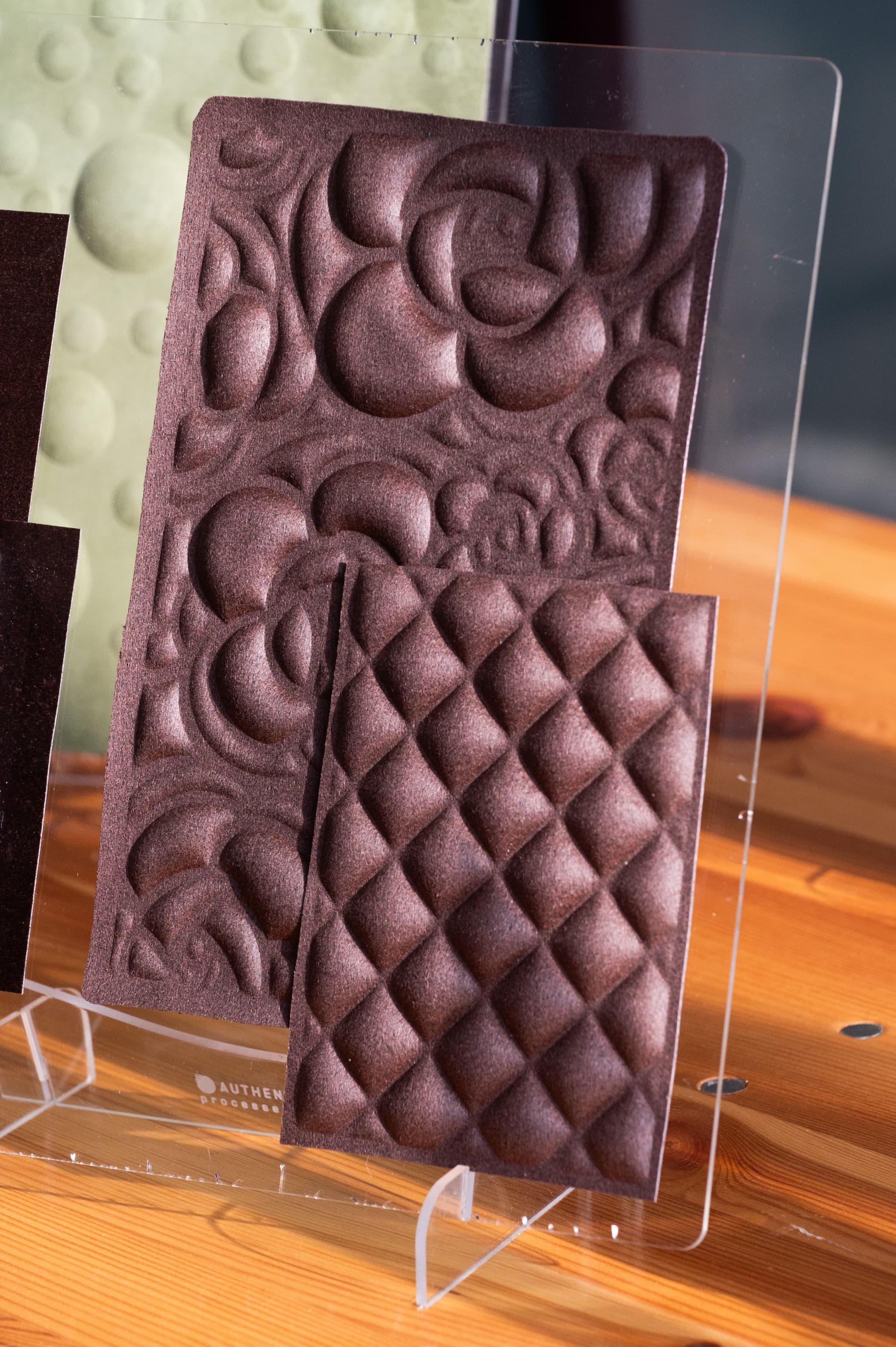
With a commitment to offering natural materials through R&D efforts, what are the emerging trends or innovations that Authentic Material is currently exploring to expand its portfolio?
We are aiming for two major objectives for QILIN: first, to increase the charge of natural material, and secondly, to test a wider panel of bio-sourced or recycled polymers and ensure their chemical alliance with our leather powder without calling for other additives. Our competitive edge is that we work with just those two ingredients, the quality of our leather powder means that we do not need additives. From a commercial perspective, the aim is for QILIN to penetrate more markets and continue to expand in Italy.
With PHOENIX, our goals are more about sales and marketing strategy. The focus is more on France with the major luxury maisons, namely for fashion and lifestyle accessories.





